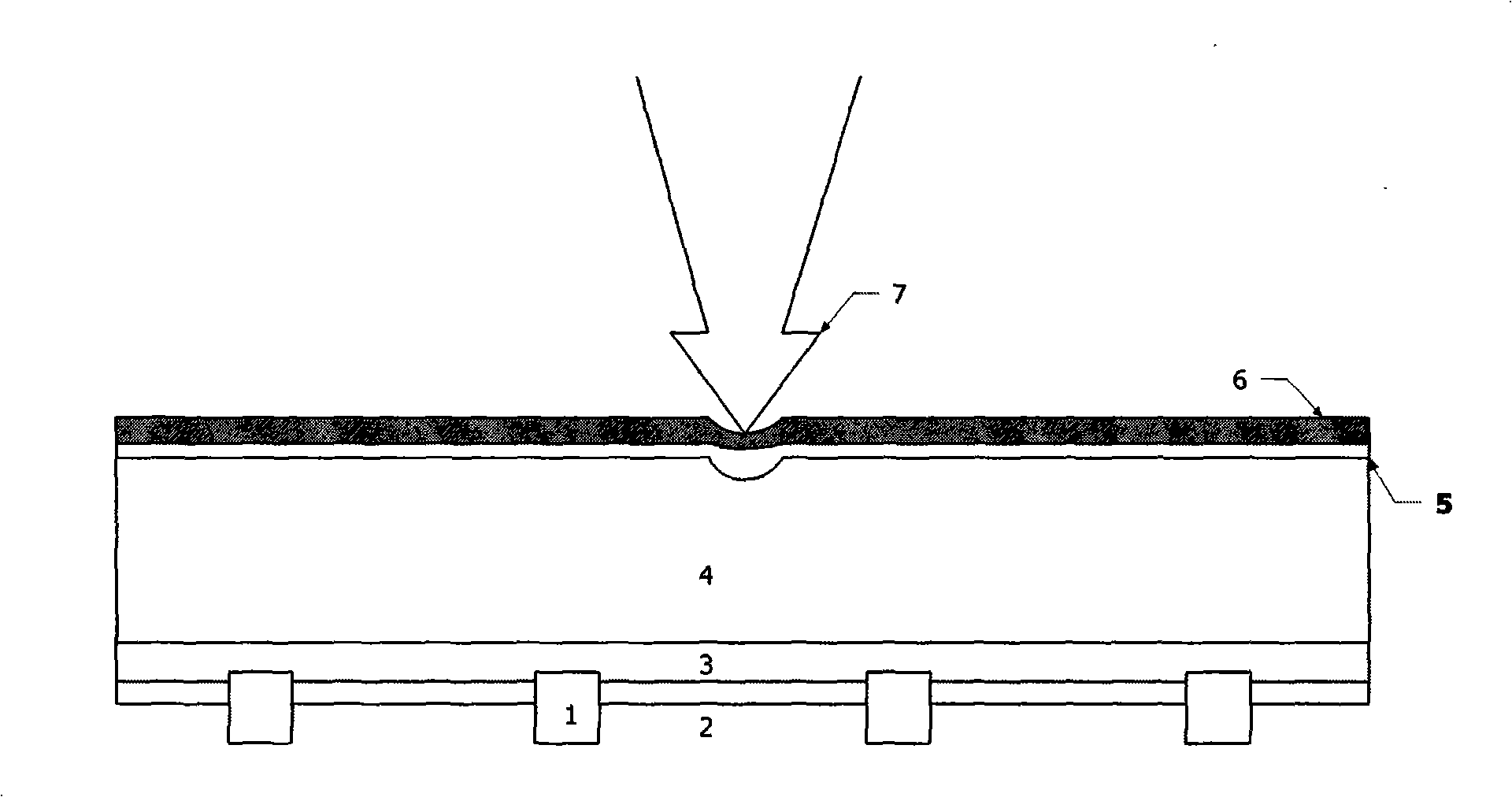Aluminized BSF secondary sintering technology for crystal silicon solar cell
A solar cell and secondary sintering technology, which is applied to circuits, electrical components, semiconductor devices, etc., can solve the problems of surface silicon nitride film performance degradation, adverse effects on battery performance, and increased silicon body defects, etc., to achieve a simple and fast manufacturing process , good prospects for industrialization, and the effect of improving overall efficiency
- Summary
- Abstract
- Description
- Claims
- Application Information
AI Technical Summary
Problems solved by technology
Method used
Image
Examples
Embodiment 1
[0025] A Nd:YAG laser with a wavelength of 1064nm is used: the laser pulse frequency is 1K-30KHz, the galvanometer scans, and the transverse mode of the beam is a low-order mode. Set the laser pulse frequency to 1-10KHz, the scanning speed to 100mm / s, and the excitation current to 16-21A. The sample is a finished conventional p-type crystalline silicon cell using a screen printing process. The sintering scanning pattern is a dense lattice, local sintering, the spot diameter is about 80 microns, and the spacing is about 0.5mm. The laser beam is sintered by repeating multiple pulses at one point.
Embodiment 2
[0027] A Nd:YAG laser with a wavelength of 1064nm is used: the laser pulse frequency is 1K-30KHz, the galvanometer scans, and the transverse mode of the beam is a low-order mode. Set the laser pulse frequency to 1-15KHz, the scanning speed to 100mm / s, and the excitation current to 16-25A. The sample is a finished conventional p-type crystalline silicon cell using a screen printing process. The sintering scanning pattern is a dense circle array, partially sintered, the diameter of the circle is 100-200 microns, and the spacing is about 0.5-1mm. The laser beam scans along the circle, which can be repeated many times according to the actual performance.
Embodiment 3
[0029] A Nd:YAG laser with a wavelength of 1064nm is used: the laser pulse frequency is 1K-30KHz, the galvanometer scans, and the light-speed transverse mode is a low-order mode. Set the laser pulse frequency to 1-10KHz, the scanning speed to 20-200mm / s, and the excitation current to 18-25A. The sample is a finished conventional p-type crystalline silicon cell using a screen printing process. The sintering scanning pattern is an array of parallel lines with a line spacing of about 50-200 microns, and the laser sintering covers the entire aluminum layer on the back of the battery.
PUM
 Login to View More
Login to View More Abstract
Description
Claims
Application Information
 Login to View More
Login to View More - R&D
- Intellectual Property
- Life Sciences
- Materials
- Tech Scout
- Unparalleled Data Quality
- Higher Quality Content
- 60% Fewer Hallucinations
Browse by: Latest US Patents, China's latest patents, Technical Efficacy Thesaurus, Application Domain, Technology Topic, Popular Technical Reports.
© 2025 PatSnap. All rights reserved.Legal|Privacy policy|Modern Slavery Act Transparency Statement|Sitemap|About US| Contact US: help@patsnap.com



